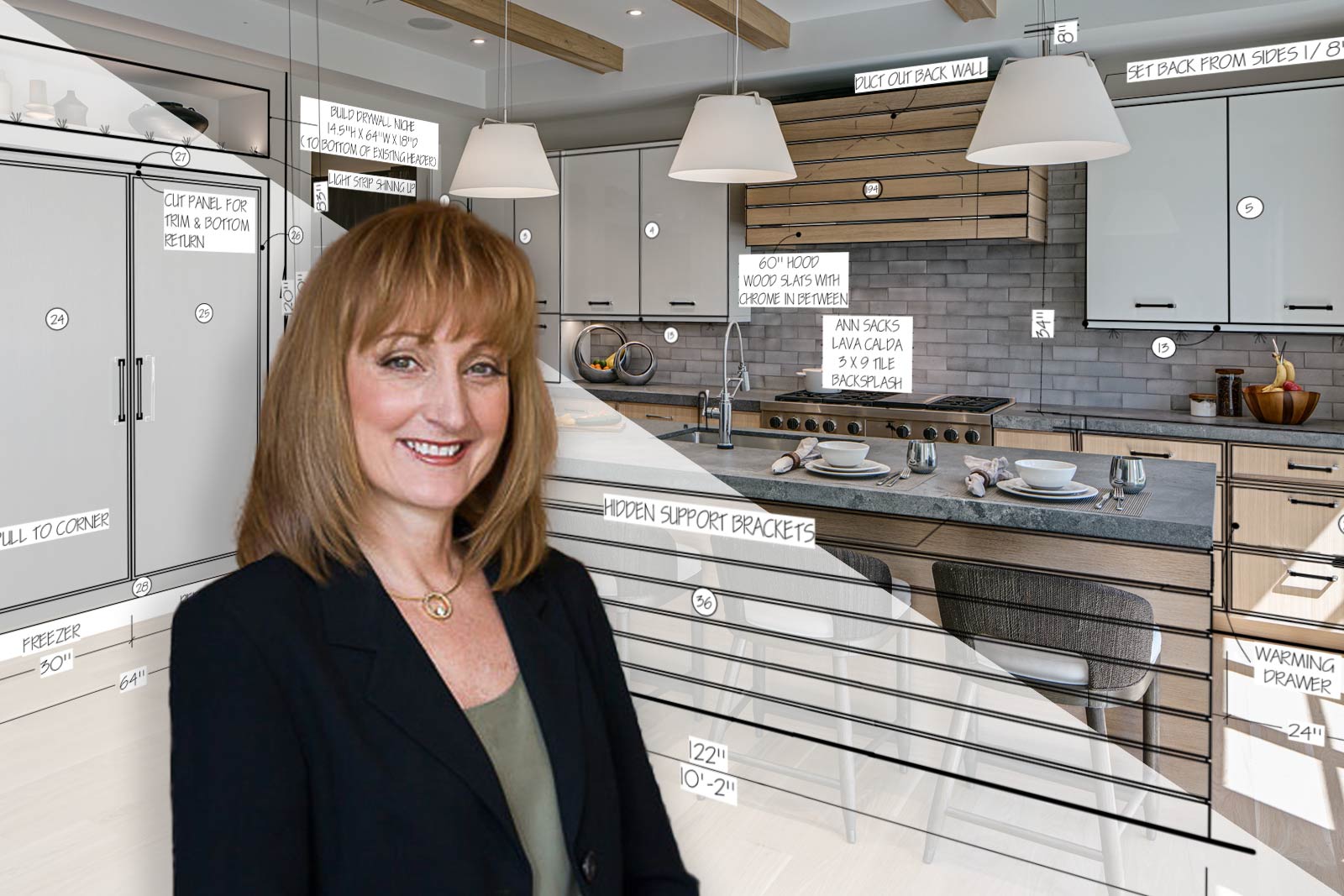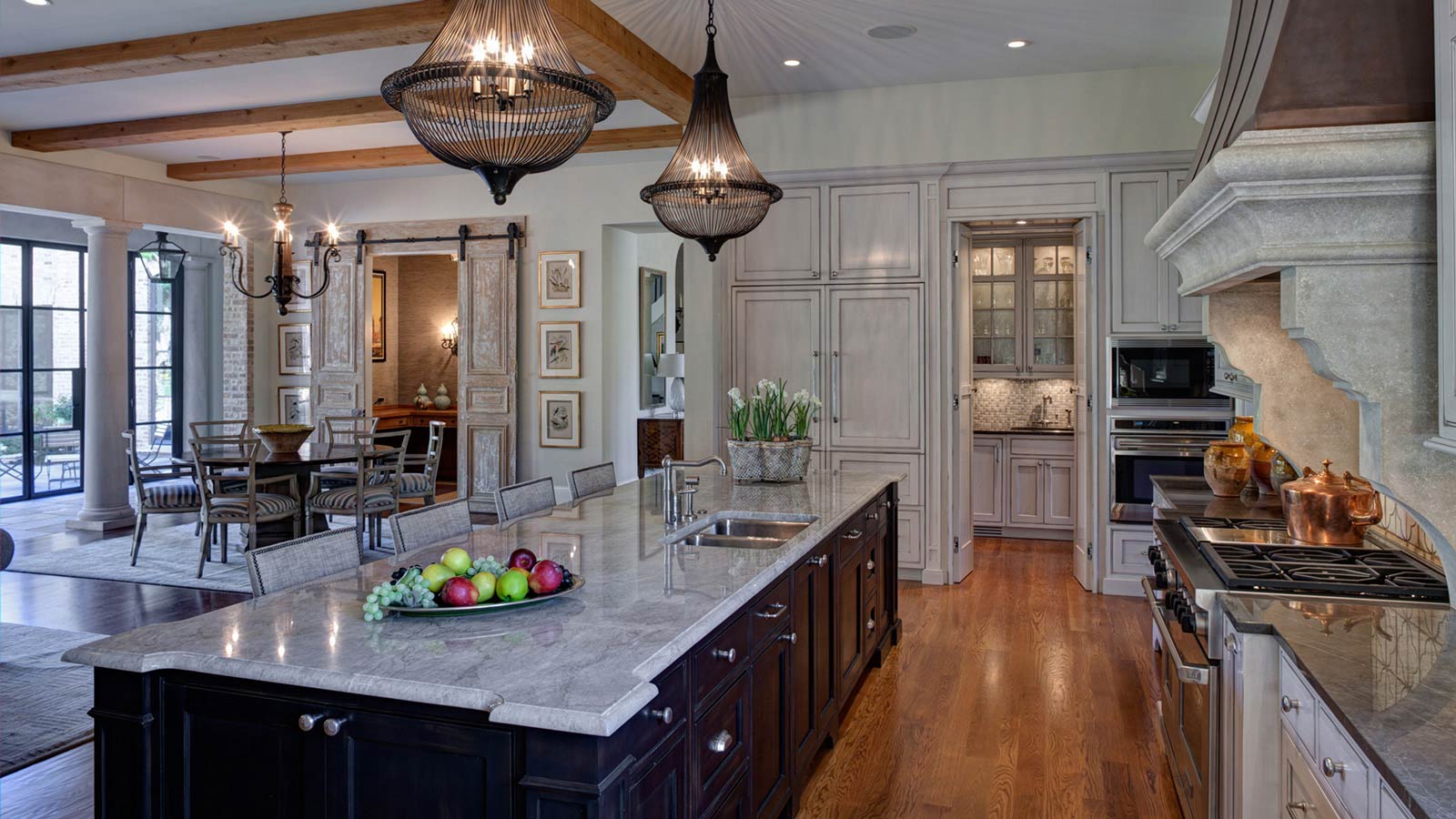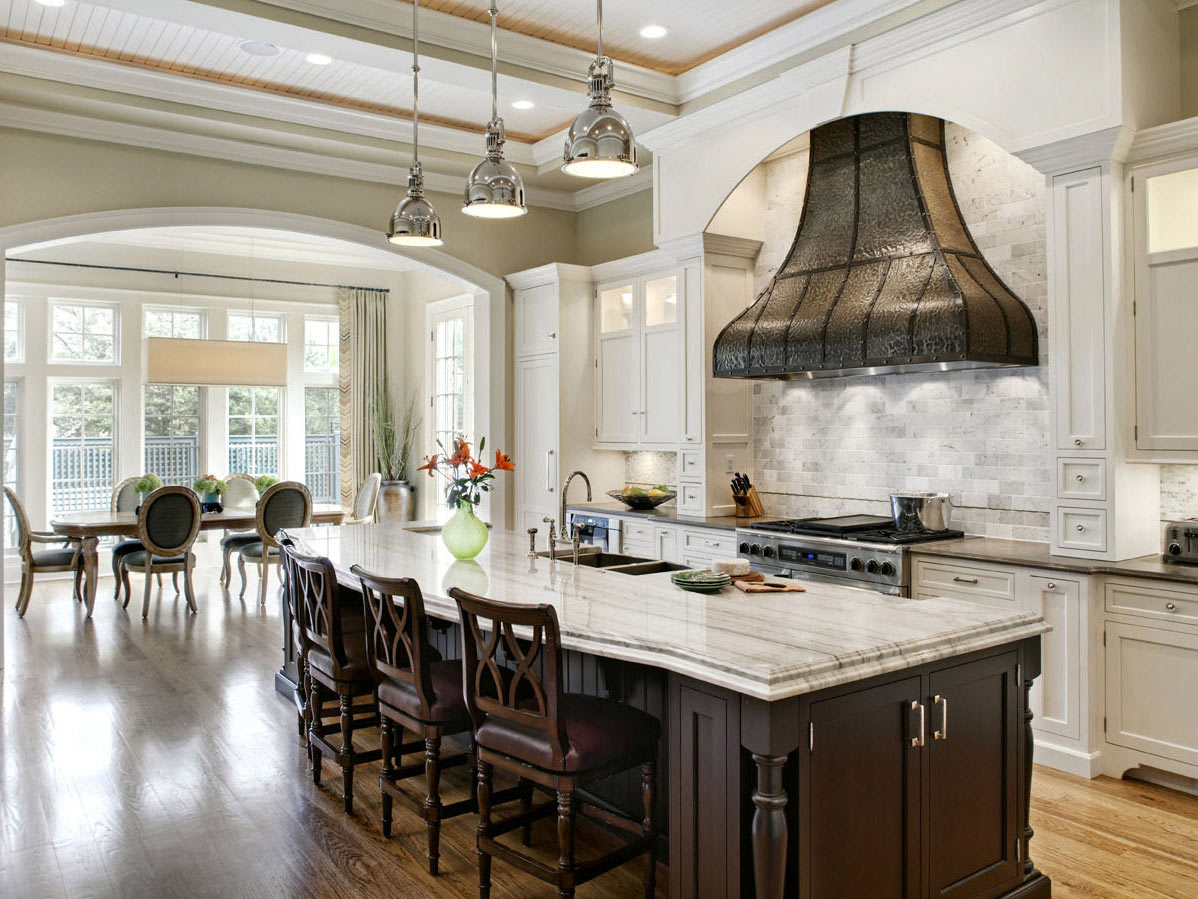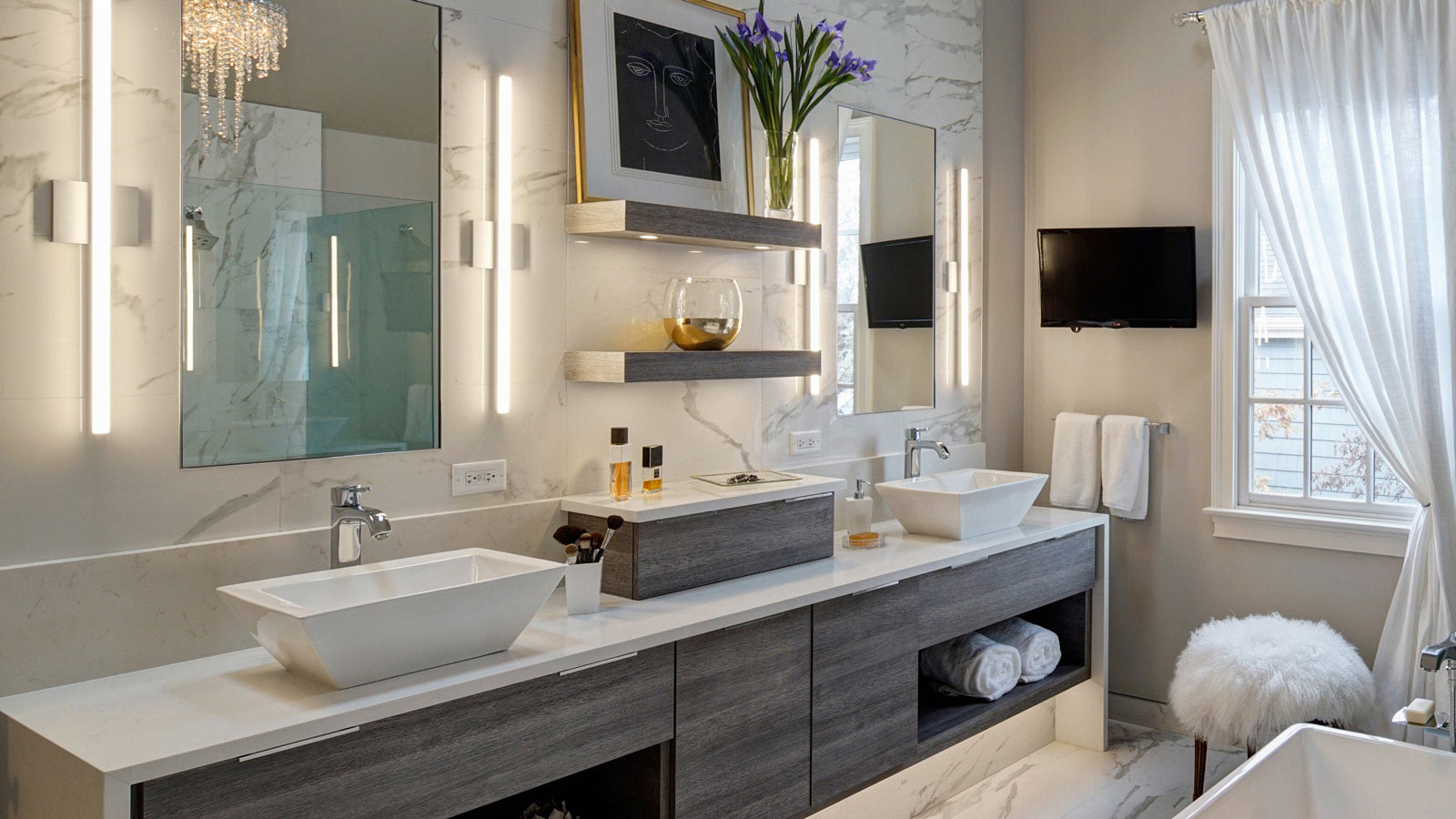Founder Profile: Gail Drury, CMKBD
As Gail Drury transitions into retirement, we thought we’d asked her about the early days of her career journey, the many changes she’s seen along the way, and why she believes the company she founded is so well-positioned for the future.
Talk about your entry point into the industry. What did it look like then?
I started at St. Charles Kitchens as an intern in 1976. I was probably one of a few people they hired with a design degree. We were innovative. We were the only company doing built-in under-cabinet lights. We had steel cabinets when everyone else had oak. We did a lot of paint. Back then, white was the number one color, as it is again today. White steel was a big deal. Now it’s white maple, of course.
At my first dealer meeting, there were 150 dealers there – mostly men – and very few people with design degrees. I looked at my girlfriend, who’s still my best friend to this day, and we said to each other, “Hey, we’re in on the ground floor here. This is going to be exciting!” We had a feeling the industry was in for some big changes.

Sounds like you got busy pretty quickly.
I started off designing showrooms. I traveled until I had kids. I traveled all around the country doing training schools, teaching people how to draw kitchens and design. One of the first people I met in the industry was Ellen Cheever, who was very well known and became an industry icon. She passed away in February of 2021. She was my mentor.
She started training programs, wrote design textbooks and went on to be the president of NKBA (National Kitchen & Bath Association). We traveled together and taught at training schools. We were trying to teach people that the business wasn’t about selling so-called (cabinet) boxes. We taught them how to be designers.
The early days were busy but fun. I also managed the St. Charles Kitchens Merchandise Mart showroom for a while. The company was sold to Whirlpool around the same time I had kids. After that, I started out on my own and worked out of my house.
From ‘selling boxes’ to actually designing kitchens… that’s quite a shift.
We were putting the focus on customers. Every client has a wish list. To get to the bottom of what they wanted, we started making design questionnaires. Do you want a mixer built into your cabinets? How many sets of silverware and dishes do you have? How many sets of pots and pans? How does your family work? Do you want a two-cook kitchen? At the time, that was a new approach.
So, for the longest time, kitchens were designed with a lot of assumptions instead of actual input.
And, believe it or not, they were designed without much thought given to aesthetics. The first couple of kitchens I did, every one of them had boxy soffits above the cabinets.
I remember the first time I did a kitchen with ceiling-high cabinets – it was like a light bulb went on. Why have soffits? That’s usable space up there! People can get a step stool if they need to.
My first five to ten years in the business were like that. Things started evolving and it hasn’t stopped.
You’re known for your ability to draw. Talk about the role of hand sketching in your career.
I actually started off as a fine arts major in college. I took perspective drawing classes at Northern Illinois. When I worked for St. Charles Kitchens, I taught the different dealers how to do perspective drawings. Remember, we didn’t have computers back then. I did my own kitchen drawings by hand for probably five or six years after I started my own business. Then computer CAD drawings became a thing.
I always thought sketching in person is the best way to brainstorm ideas. I think sketching is now a dying art in the industry.
You brought a mix of artistry and engineering to the table..
The so-called “engineer brain” runs deep in my family. My dad and many of my relatives were engineers. I considered becoming an architect for a moment. I love beautiful design but I enjoy thinking through the important engineering elements of any project – especially the little details.
There’s nothing I love more than walking into somebody’s house and hearing them say, “This kitchen is so dysfunctional – I wish it were on the other side of the house.” That’s a solvable problem.That’s when I sketch out four or five options and then we’ll talk about which option is going to best fit their lifestyle, budget, etc. When we’re done, they can make an educated decision based on having all the facts.

2013 kitchen by Gail Drury
The process at Drury Design, that’s a big part of the business you built – perhaps more important than the hundreds of design awards over the years.
The awards are nice but, at the end of the day, these are real spaces that people live in. Figuring out the process to make those designs come alive was the key. I figured out early on that if you go through a process – go from point A to point Z, and take it one step at a time – it’s not overwhelming. I enjoy helping people go through that process.
To me, it’s not about selling people something – it’s about helping them make decisions and making sure they are comfortable with their decisions. I want them to feel good and in control throughout the process.
So, the word got out that you were helping people who needed new kitchens and bathrooms.
People who came into the showroom already knew about us. My husband Jim started helping me with advertising and marketing in about 1995 and then came on board in 2000. At first, I would sketch out a little kitchen and we’d put it in the Glen Ellyn News. That was the extent of our ads.

2009 kitchen by Gail Drury
You’ve seen a lot of change.
Yes – technology, appliances… even the idea of how to move around in a kitchen. You know, the classic work triangle: the sink, the range and the refrigerator. These days some people want a little computer area, or a separate microwave/steam oven area, or a two-cook kitchen with two work triangles.
I remember the first kitchens I did, everybody had a peninsula. Then it went to islands. Then it was the islands with tables built in on the end. Then kitchens got larger and the options became limitless.
How did the business evolve?
I hired an installation manager after about 10 years. I was managing installations myself before then. Then, my brother Rick joined in 2002. He started managing installations and has been doing it ever since. Having everything go smoothly during installation was always of utmost importance to me. Then we started hiring assistant designers. That’s more hands on deck for design drawings and computer work. Running a build and design firm is just a matter of realizing people’s strengths and getting a team to back everything up.

2017 primary bathroom by Gail Drury
What about the future of kitchen and bath design? How will Drury Design stand out in an industry crowded with up-n-comers and people wanting to DIY their own projects?
I think people who want luxury kitchens are always going to be looking for someone experienced to help them put it together. Yes, DIY is popular and there are apps out there to help you, but people will always need help when it comes to the level of designing and building that we do. I don’t know of any other kitchen showroom in the Chicagoland area that offers the level of service and attention to detail that we do.My goal has always been to help people through the entire process – everything from the idea stage through to project completion.
So, heading into retirement you knew that you couldn’t sell the business to just anyone.
Gladys Schanstra and I go way back. She started as an intern here and worked her way up before starting her own firm and then coming back as the new owner. She understands the value of what we’ve been doing for 35 years here because she’s been a part of it. She and her husband, Carl, are committed to the same process and the same level of white-glove service Drury customers expect. Drury Design is all about taking care of people.
What a ride. What have you learned?
I’ve learned that it is all about listening and connecting with people. My job has always been to guide people, share my expertise and help them create beautiful new spaces that fit their lifestyle. The joy in my career has been helping people do this.
